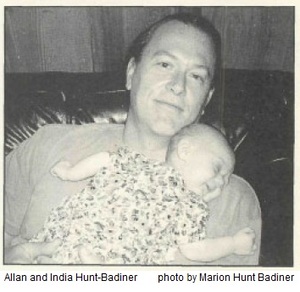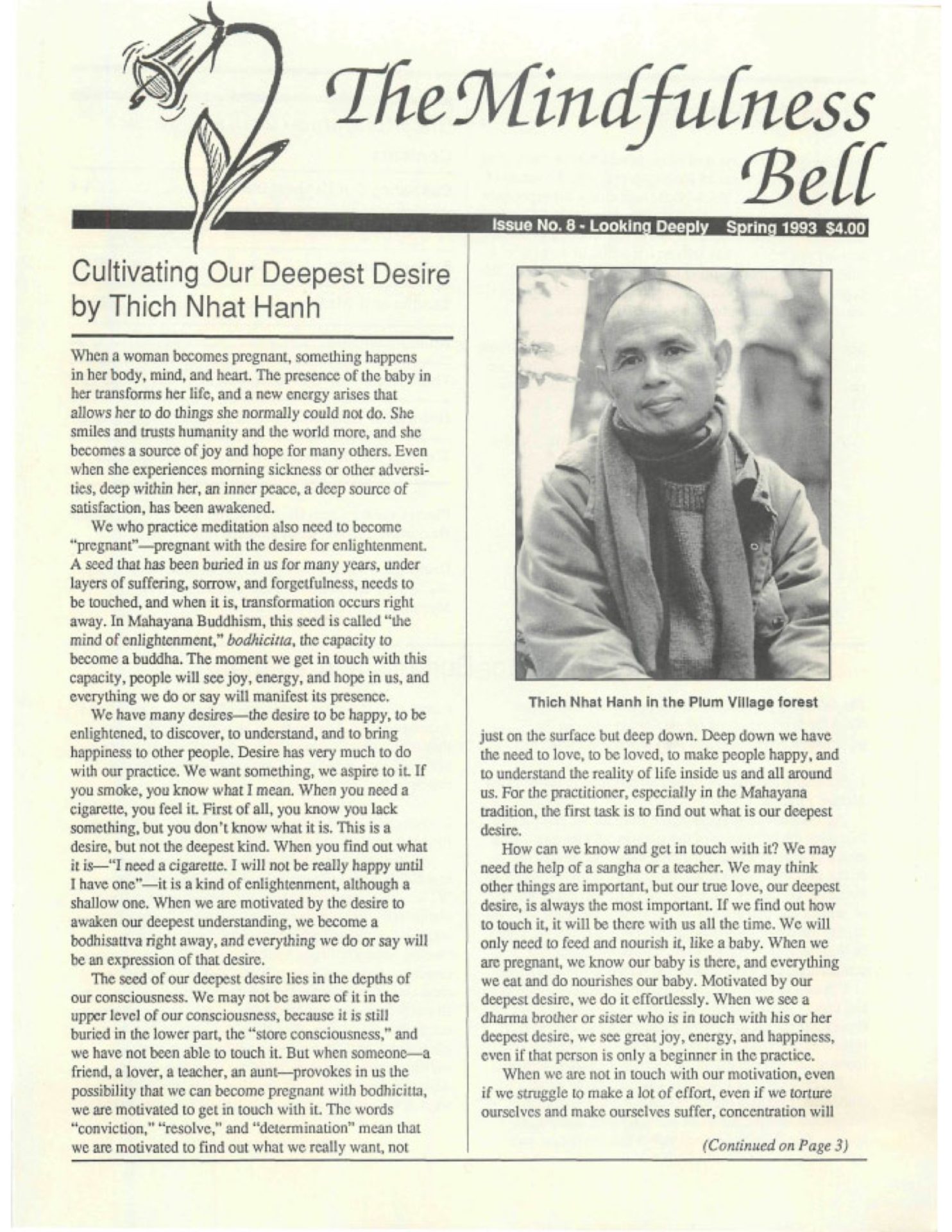By Allan Hunt Badiner
The third of the Five Awarenesses: We are aware that our joy, peace, freedom, and harmony are the joy, peace, freedom, and harmony of our ancestors, our children, and their children.
The first thing I do when I return home is pick up my baby daughter, India, and hold her in my arms. Whatever I do next-—greet my wife, pour something to drink, or just sink into a chair and catch my breath—my arm remains wrapped around her,
By Allan Hunt Badiner
The third of the Five Awarenesses: We are aware that our joy, peace, freedom, and harmony are the joy, peace, freedom, and harmony of our ancestors, our children, and their children.
The first thing I do when I return home is pick up my baby daughter, India, and hold her in my arms. Whatever I do next-—greet my wife, pour something to drink, or just sink into a chair and catch my breath—my arm remains wrapped around her, holding her snugly to me. It is clear she can feel how glad I am to be reunited with her. Her little mouth widens into a wide, ecstatic grin of delight—while my mouth does the same until we are both wearing bright expressions of sheer joy. There we sit, breathing and smiling together, for what seems like countless time.
Reflecting on this deeply rewarding experience, it is easy to see that joy is not an individual matter. When India smiles, I feel happy, and my smile gives her great pleasure. The Buddha's teaching on interdependence feels particularly evident at these times. When India is unhappy or crying, there is no way I can really be happy. My practice becomes making her happy.
While my joy and pain are shared with India, they are also shared with her unborn children—the seeds of which have been physically present in her body since her own conception. When she and I are communing in rapture, it seems as though my deceased father is also smiling within me. Perhaps his mother too is checking in on the excitement. Both the roots and fruits of the family tree enjoy this refreshing shower of love, despite differences in time and space.
My wife and I have been wondering how, as India grows older, we might encourage habits and behaviors that will support this multi-generational love. We want to be aware when our child is happy or not, and we want her to be aware of our feelings too. The key must be awareness—without which there can be no happiness. The joy that we share with her is possible only when we are aware that India is there, and that we are looking at her. To protect her joy, and our own, I envision engaging her in a practice of mindfulness, so that she will be truly aware of those around her. I plan to breathe and smile with her regularly.
Sometimes I see my mother living in the motions and expressions of my daughter. When she is crying, the pain of the generations seem to be crying along with her. I remember being aware of my mother's unhappiness. When I experience joy with my daughter, it feels as if that joy also touches my mother, and nourishes and heals her.
At times in my own childhood, my parents made me unhappy and caused me to suffer deeply. In order to forgive them, I remember that they suffered as children too, and they didn't know how to transform themselves. They carried the suffering with them and passed it on to me even though they didn't consciously want to. Awareness is the only sword that can cut through this vicious circle.

To notice that our joy, peace, freedom, and in fact, our very happiness in this life are not just our own is an awesome realization. We best live our lives in such a way that both our children and our ancestors can feel free within us to grow and change. When we liberate our parents within us, we liberate ourselves and our children. For them to be at peace, we must be at peace with them. For us to be peaceful, they must be at peace. Now it is clearer to me how my daughter's unborn children are able to make my grandmother happy, or how my great-grandfather could torment my future grandchildren. It happens within me!
Occasionally we bring India with us when we sit in the zendo. Most of the time she is able to stay quietly perched against a shoulder enjoying our calm bodies and the deeper rhythm of our breathing. When the bell is invited to sound, the baby becomes totally still and transfixed. Her eyes slowly rise to find my face, and, just as our eyes meet, her face ignites into an ebullient smile. Her wild effervescence summons the notion to my mind that her future daughters and sons, and their children too, are in touch with this moment.
The pursuit of happiness is not as personal an enterprise as we may have thought. Happiness is not found for oneself, but for the whole chain of being in both directions of time, of which we are but a temporary link. If I practice well and often, the benefits will be enjoyed by many generations. When I breathe slowly and mindfully, I am cultivating the seeds of happiness that lie within countless generations of beings far into the future and back into the past. As Thich Nhat Hanh likes to remind us, the past and the future dwell right here in the present moment. The joy born of mindfulness touches the past and shapes the future right now.
Allan Hunt Badiner is a writer living in Big Sur, California.

